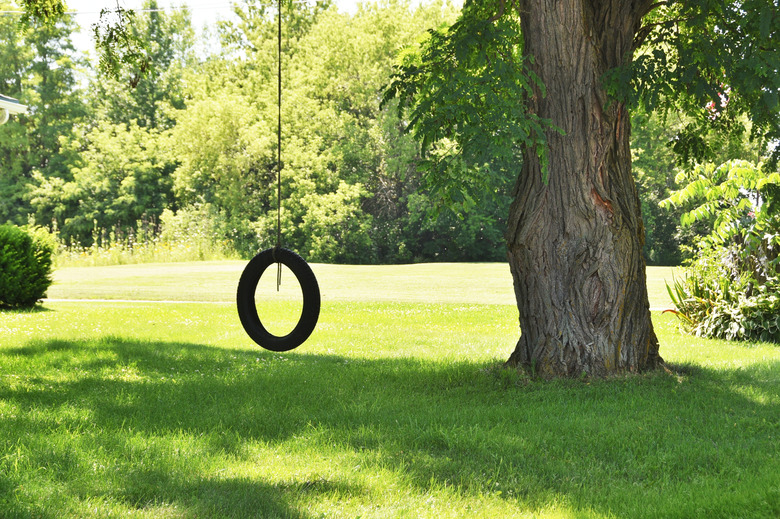How To Figure The Drip Line Of A Tree
We may receive a commission on purchases made from links.
Experts frequently toss around the term "drip line of a tree" when giving gardening advice, but many people have no idea what it means or why it is important. It is also called the critical root zone of a tree, and it must be protected from excavating or trenching. It is also important for tasks like mulching, fertilizing, and watering the tree.
Learn About Drip Lines
Learn About Drip Lines
Think of an umbrella that is open during a rainstorm. The rain drops fall on all areas of the top side of the umbrella, but assuming the umbrella is not ripped, the rain all drips off the outside edges. It drips down to the ground in a circle that is the same size of the umbrella if the person holding it is standing still.
Translate this to a landscape tree. The branches do not prevent rain from dripping to the same extent as an umbrella does, but there is some rain protection standing under a tree. In trees with dense canopies, most of the rain drips down to the ground in a circle the same breadth as the canopy. This circular area is the tree's drip line, also called its critical root zone.
Understand Why This Zone Is Critical
Understand Why This Zone Is Critical
The area beneath a tree's drip line is called a critical root zone or a protection zone. It is very important to a tree since the most critical tree roots are generally found beneath the soil in that area. These roots are the ones that need the most protection and nurture. This zone must not be disturbed if the tree is to remain healthy. Trenching, paving, or altering drainage patterns near this area is also likely to hurt the tree.
This is a general drip line rule, not an absolute one. Different trees have different root systems, varying in depth and spread. The variances can be exaggerated in certain trees and in certain soil types. In some species, like oak trees, the critical root zone can extend far beyond the canopy of the tree.
Water and Mulch to the Drip Line
Water and Mulch to the Drip Line
Because the drip line is the area where critical roots are found beneath the soil, this area should be protected from all digging activities. But that's not the only use for the drip line information.
The drip line circle is also the best place to water a tree. Since roots grow best in moist soil, it's a good idea to use an irrigation system that wets at least 50 to 60 percent of the tree's root area. This is also the area where fertilizer and mulch should be applied.
Mulching a tree helps to hold moisture in the soil. Mulch also protects a tree's roots from heat and cold. The process involves applying a 2- to 4-inch layer of mulch beneath the tree, starting a foot or two away from the trunk and continuing to the tree's drip line.
